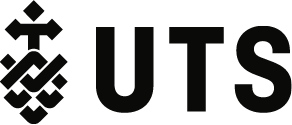The most recent Work Integrated Learning Network (WILN) meetup offered insights into how academics can support their students to learn about and work with GenAI use for the workplace – a complex issue that everyone in higher education continues to grapple with.
This session was moderated by WIL Coordinators Franziska Trede and Dimity Wehr, and featured presentations from:
- Dr Milena Bojovic (Lecturer in Sustainability and Environment, UTS)
- Associate Professor Bonnie Amelia Dean (Head of Academic Development, Learning, Teaching and Curriculum Development, University of Wollongong)
- Dr Jack Walton (Research Fellow at Centre for Research in Assessment and Digital Learning, Deakin University)
As Franziska commented at the beginning of the session – the idea of GenAI in the workplace is not necessarily a ‘coherent’ concept. Every workplace will have their own protocols, expectations, pitfalls and benefits when it comes to using GenAI products. So how can we best prepare students to succeed in these different scenarios?
You can watch a recording of this session here.
GenAI through a sustainability lens: Milena Bojovic
As a lecturer in Sustainability and Environment, for Milena the challenge of ethical engagement is front of mind. Balancing the potentially harmful effects of GenAI on the environment (e.g. water, energy and land use, electronic waste) against possible benefits (e.g. real time analysis of environmental changes such as CO2 concentration and rising water levels), Milena explored some of the ways she works with her students to prepare them for future employment.
As many of Milena’s students are already gaining experience in the workplace via their internships, they are also able to offer different perspectives on how GenAI is being used, which Milena gathered through student survey feedback. The student’s responses varied, with some students being instructed not to use it, some instructed only to use GenAI (usually a bespoke model), some employers were indifferent, and some students chose not to (in some cases, this was because students weren’t sure if usage of GenAI was permitted).
Milena’s approach is to focus on critical thinking, research and communication skills for GenAI – for students to understand how generative AI works and to upskill them in recognising its limitations as well as its benefits. For this, Milena has developed an excellent activity which she has previously written about on Education Express: Teaching with GenAI: building ethics, critical inquiry, and innovation.
This exercise encourages students to become familiar with different, important aspects of GenAI, including which tool to choose, how to use these tools for research, understanding what kinds of responses are given for types of prompts, and concerns like ethics, bias and privacy.
Where WIL can go with AI: Bonnie Amelia Dean and Jack Walton
Bonnie and Jack began with the evidence behind their approach to underscore the significance of GenAI for WIL planning. Drawing from the AI in the Workplace survey from the Digital Education Council, they showed that 56% of employers report AI daily usage in their organisations, and 85% of the surveyed employers expect AI to transform their business by 2030. They also note, according to AI in Higher Education that 83% of students use AI for their studies, and 44% report daily AI use.
Contextualisation is a recurring theme for GenAI and WIL – just as Milena noted the different situations her students had shared from their internships, Bonnie pointed out that issues with GenAI manifest very differently based on context. To help learning and teaching practitioners prepare for these different scenarios, Bonnie and Jack pointed to a new, valuable resource:
The Cradle Guide to GenAI in Work-Integrated Learning
This is a comprehensive introduction to think about GenAI in higher education through a WIL lens, created by Joanna Tai, Bonnie Dean, Jack Walton, Kelli Nicola-Richmond, Dave Cormier.
The guide is intended to support students, university WIL practitioners and educators, and industry or community partners who host students for WIL experiences, in navigating the tricky and ever-evolving landscape of GenAI use across learning and professional work.
Via Cradle
Thinking about the future of AI and WIL
WIL, like so many aspects of higher education, is being transformed by AI. As the technology continues to change, and we gain further insight into what kinds of expectations employers have of new graduates, WIL practices can be updated and adapted to ensure that we are supporting students in the best ways we can.
WIL and GenAI will be a topic of discussion at the upcoming WIL Symposium on 24 September. Register via the link below and join the conversation.
